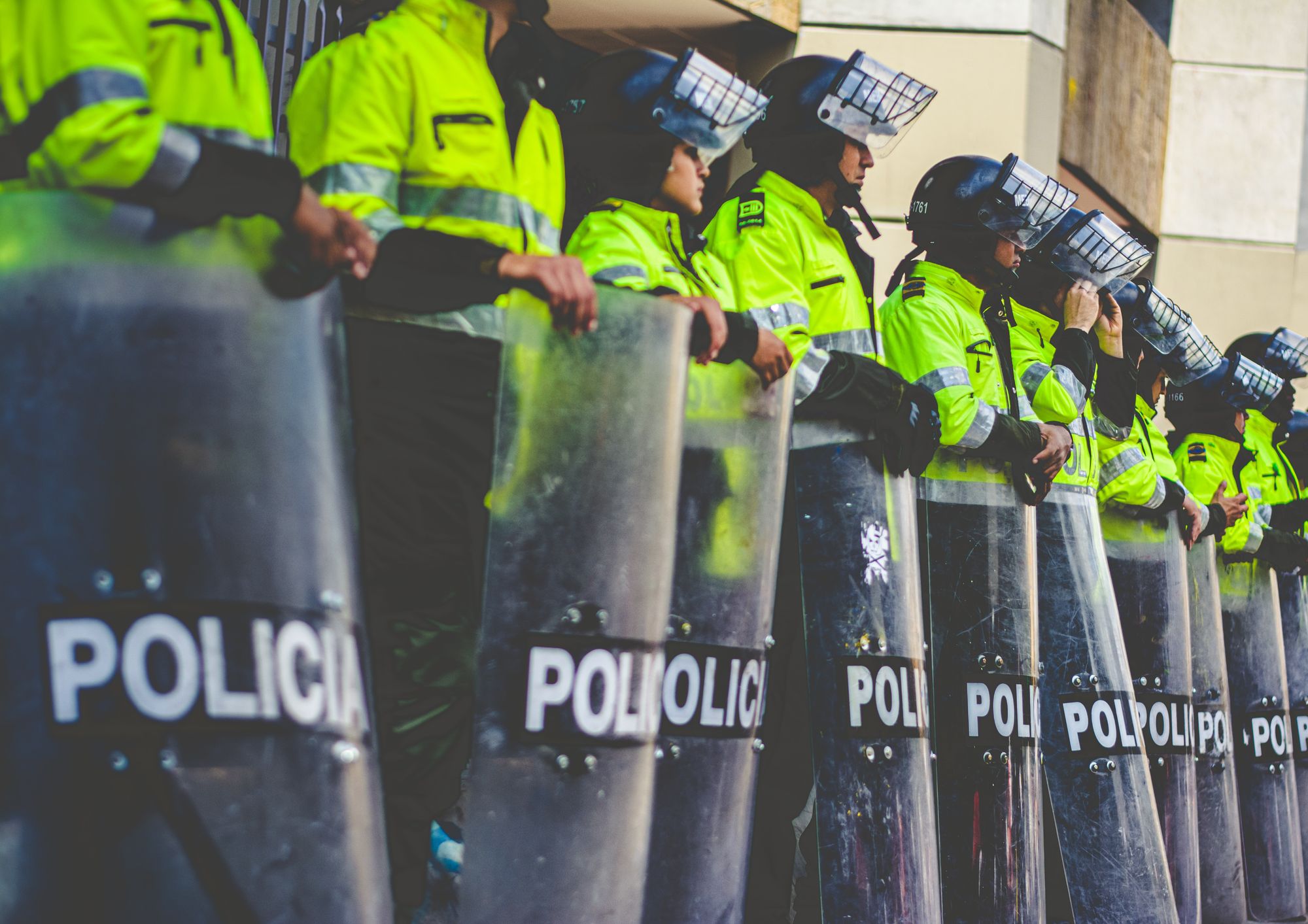Written by Alex Cosh
A Canadian human rights organization says documents obtained from Global Affairs Canada (GAC) raise more concerns and questions than answers about whether or not the Colombian national police are using Canadian-made armoured vehicles to violate human rights.
Peace Brigades International - Canada (PBI) obtained GAC emails regarding the export of Canadian-built INKAS armoured vehicles to the Colombian national police through access to information (ATIP) legislation.
INKAS is a Canadian-based multinational security company that, according to its website, has contracts with more than 30 governments worldwide. Founder and CEO David Khazanski’s LinkedIn page boasts that his company’s non-state clients include “global corporations, and high net-worth individuals.”
In 2014, INKAS announced it had sold the Colombian national police four armoured vehicles, boasting in a press release at the time that its Huron tactical defense and attack vehicle came equipped with a “roof-mounted gun turret [that] can be customized in order to meet the requirements of each customer.”
In a separate deal in 2013, General Dynamics Land Systems (GDLS), a Canadian military vehicle manufacturer, secured a $65 million contract with the Colombian Ministry of National Defense for light-armoured vehicles (LAVs) in a deal facilitated by the Canadian Commercial Corporation (CCC), a Crown corporation that helps Canadian defence companies obtain contracts with foreign governments.
Human rights group Amnesty International has urged Canada to end military exports to Colombia given “profound concern about the deepening human rights crisis in Colombia and militarized repression of ongoing demonstrations across the country.”
Last year, Human Rights Watch (HRW) said that in response to peaceful protests against the right-wing Colombian government's proposed tax changes, “Police officers … responded by repeatedly and arbitrarily dispersing peaceful demonstrations and using excessive, often brutal, force, including live ammunition.”
HRW said it had documented “multiple killings by police, as well as beatings, sexual abuse, and arbitrary detention of demonstrators and bystanders.”
PBI received just two GAC emails from last year in response to its ATIP request regarding INKAS exports to Colombia. A June 2021 email stated that of the seven valid Colombian export permits that encompass armoured vehicles, “none would fall into the police/paramilitary crowd control category.”
An October 2021 email states that there were three Colombian export applications under review. PBI speculates that “one of these permit applications could relate to the 50 [GDLS-made] Light Armoured Vehicles (LAVs) that the Colombian Army wants to buy,” citing an article published by InfoDefensa.
The GAC email continued:
“The vast majority of the more than $47 million in Canadian military exports to Colombia between 2012 and 2020 took place in 2014 when — exported 46 LAVs to the Colombian Army through the Canadian Commercial Corporation (CCC) in [a] government to government contract.”
It is not clear whether CCC had any role in facilitating the new LAV deal reported on by InfoDefensa. In an email to The Maple earlier this month, a CCC spokesperson said the Crown corporation “has not been approached by the Government of Colombia in relation to the purchase,” but would not clarify whether CCC had any involvement at all in brokering any such deal.
Regarding the INKAS armoured police vehicles, the GAC email continued:
“Officials from BGOTA [the Embassy of Canada in Colombia] asked the Colombian National Police (CNP) whether these armoured vehicles were being used in response to the social protests that began in late April. CNP officials responded that no Canadian armoured vehicle was being used for such a purpose.”
Another heavily redacted section of the email stated: “The vehicles are not being used by ESMAD (Escuadron Movil Antidisturbios or Mobile Anti-Disturbance Squadron).”
In an interview with The Maple, PBI executive director Brent Patterson said the emails confirm that in response to concerns from human rights groups like PBI about Canadian armoured vehicles being used by Colombia’s right-wing president Iván Duque to suppress a national strike in 2019, the Canadian embassy was spurred into action.
However, Patterson is concerned that the embassy simply took the police at their word that Canadian-made INKAS vehicles were not being used to suppress protests without any follow up investigation.
“From what we can ascertain in these emails, that's kind of the end of the story,” said Patterson. “There's no independent verification; there's no other process underway.”
Patterson also expressed concern about the fact that the emails appear to show that GAC only bothered to contact the Colombian national police in response to pressure from civil society.
“Unless civil society was asking the government about this concern, it doesn't seem that they, in and of themselves, would have looked into the matter,” he explained.
In all, said Patterson, the documents highlight “the lack of transparency, the lack of real rigour, the lack of independent investigation, the lack of any real seriousness about looking into the potential human rights implications of the sale of armoured vehicles to Colombia, when there are real reasons to be concerned about how they're being used.”
Besides the brutal suppression of strikes and protests by police, he explained, Colombian activists have repeatedly warned that when mines and other extraction projects are set up, they are typically accompanied by an increased militarization of the affected areas.
As of 2020, Canadian mining companies owned $837 million worth of assets in Colombia, while Canadian energy companies owned $8 billion worth of assets in the country as of 2018. In 2020, Canada exported $460,000 worth of military goods to Colombia, including ground vehicle components, and military software and technology.
“Given the level of Canadian investment in mining and oil and gas operations in Colombia, coupled with the sale of armoured vehicles and other military goods, I think it at least sets up an equation for concern,” said Patterson.
